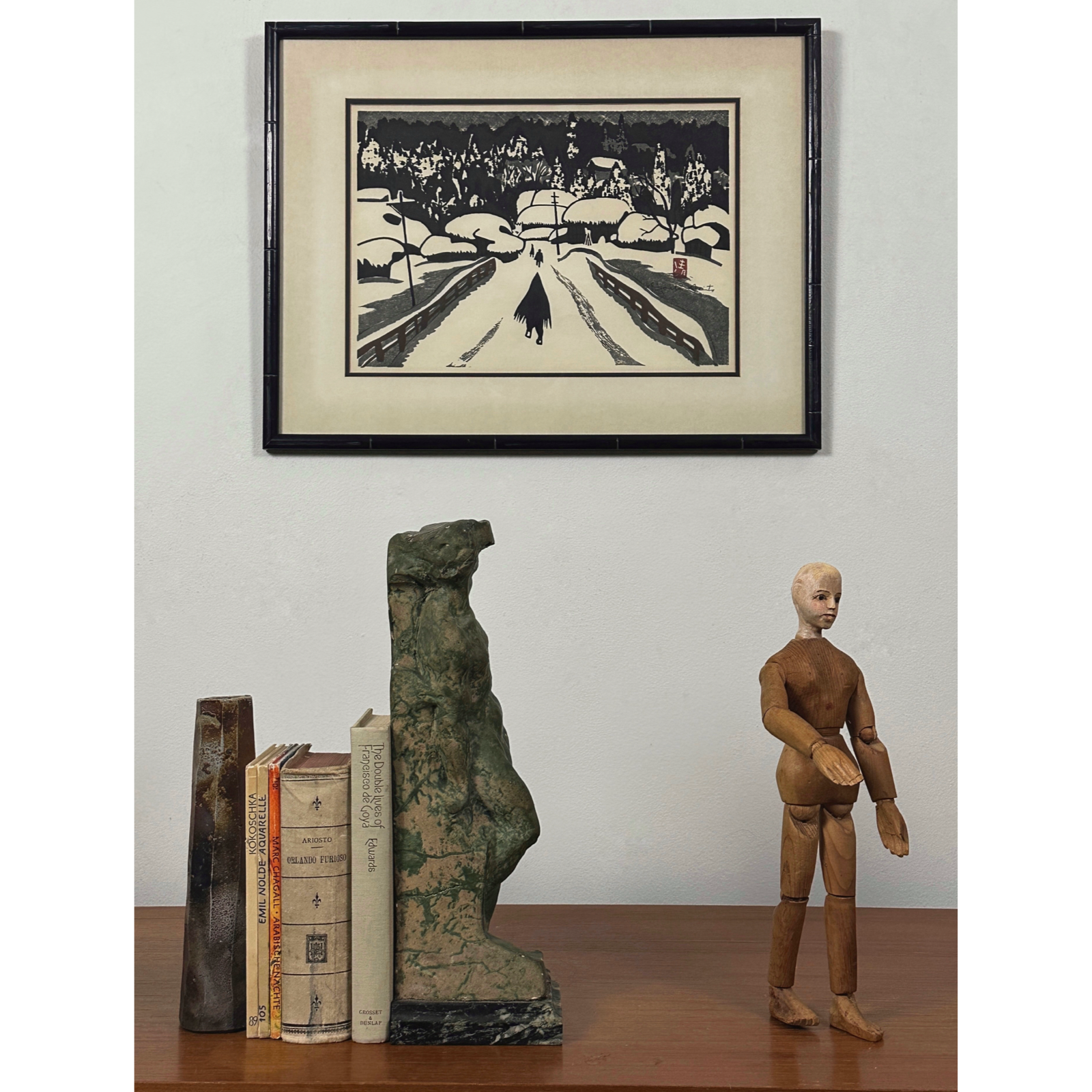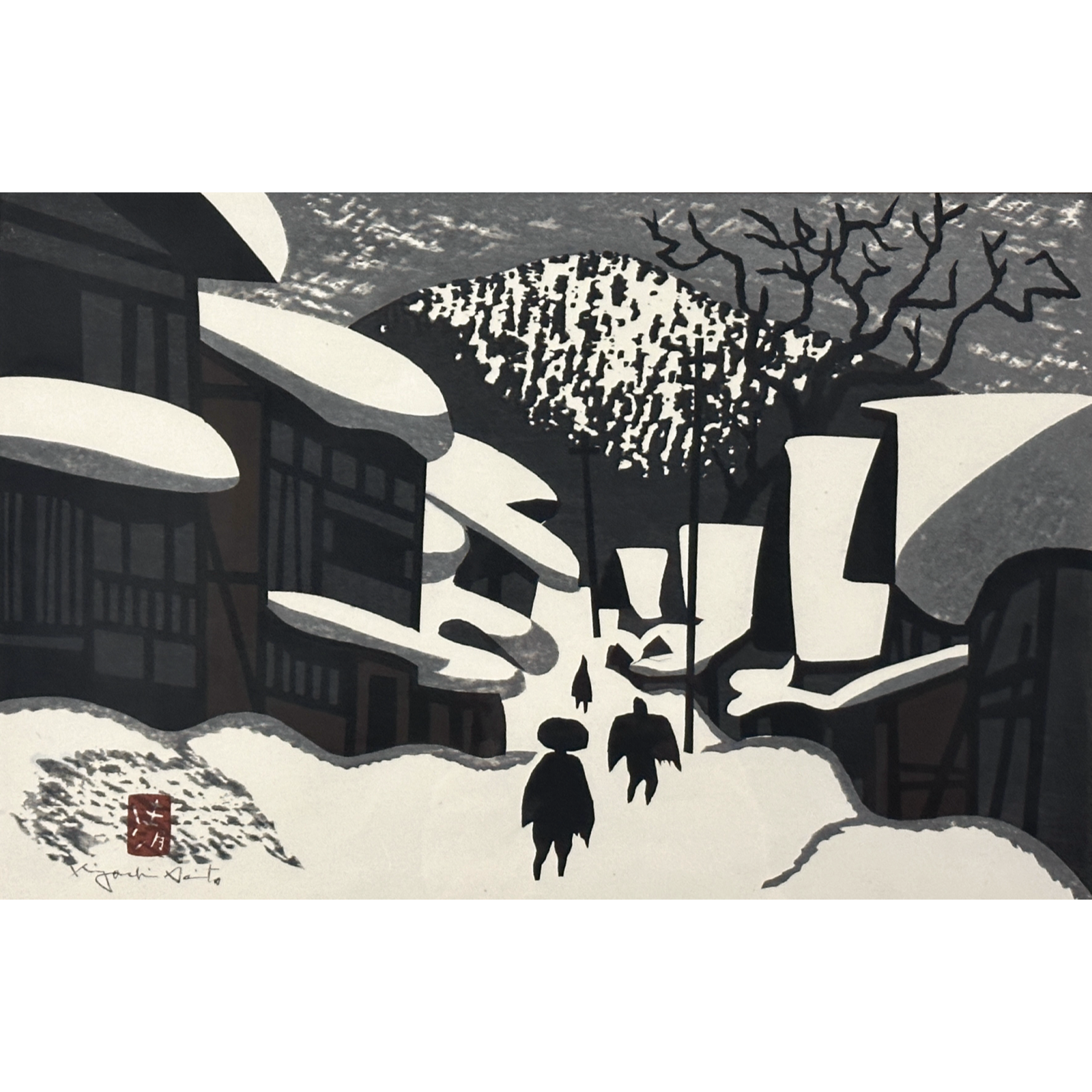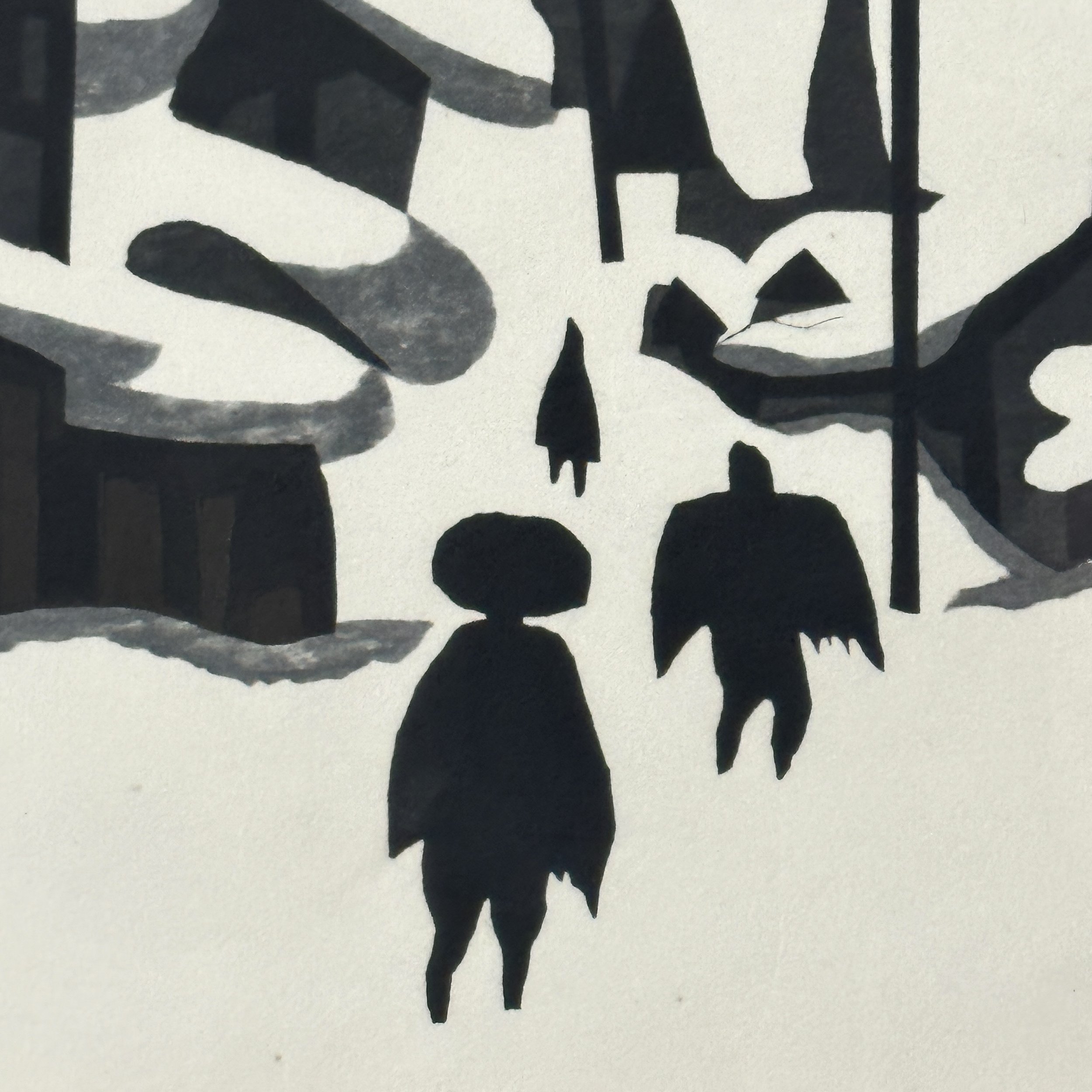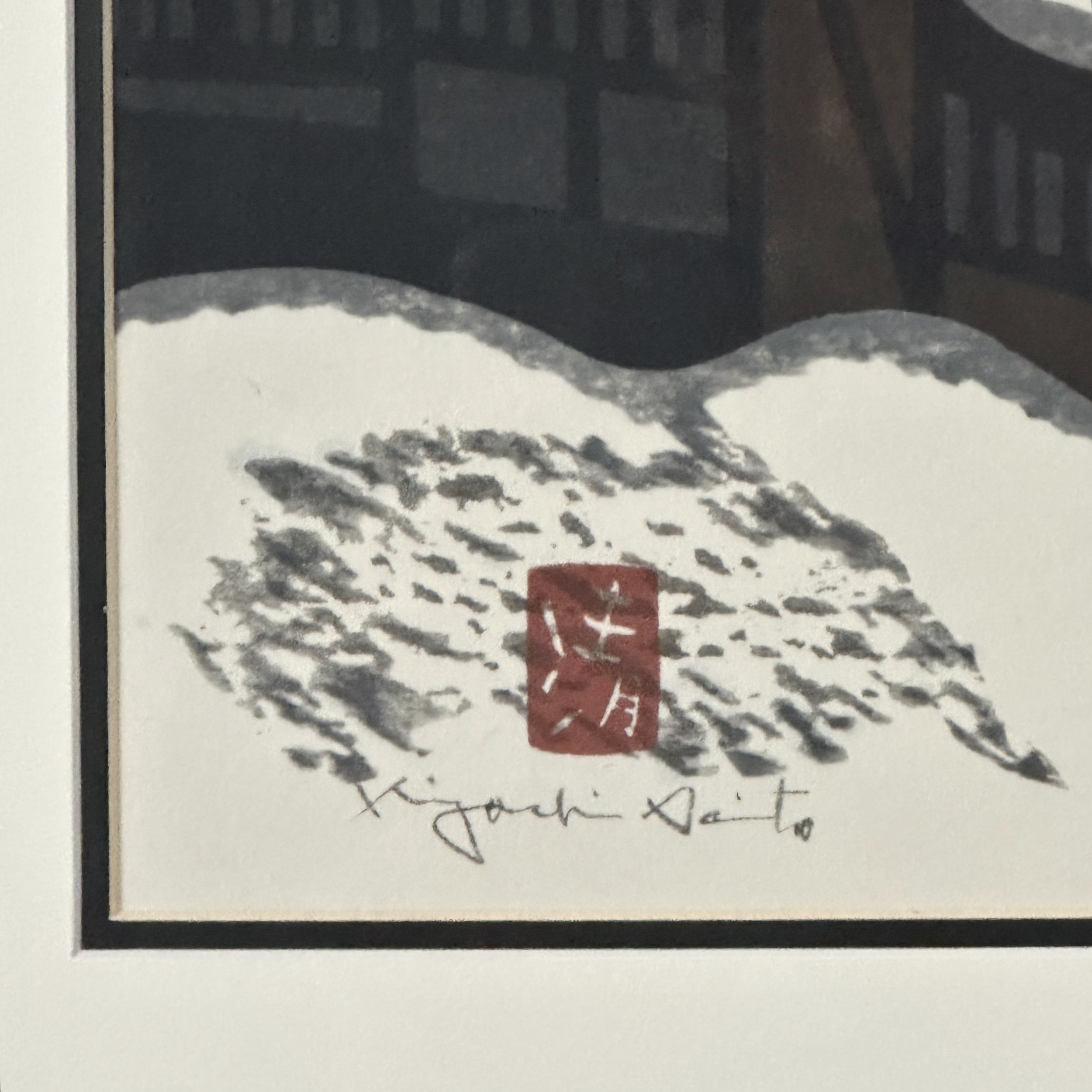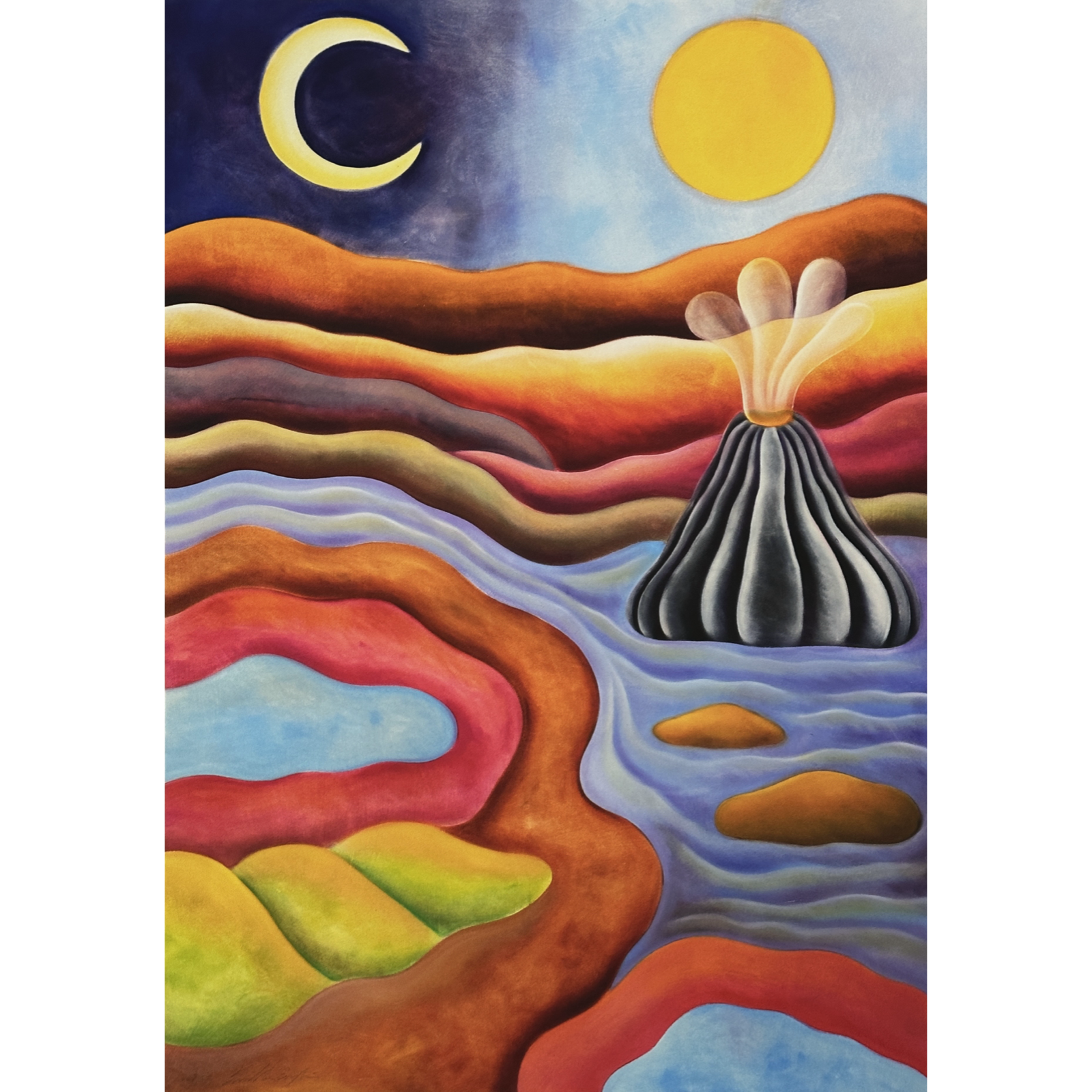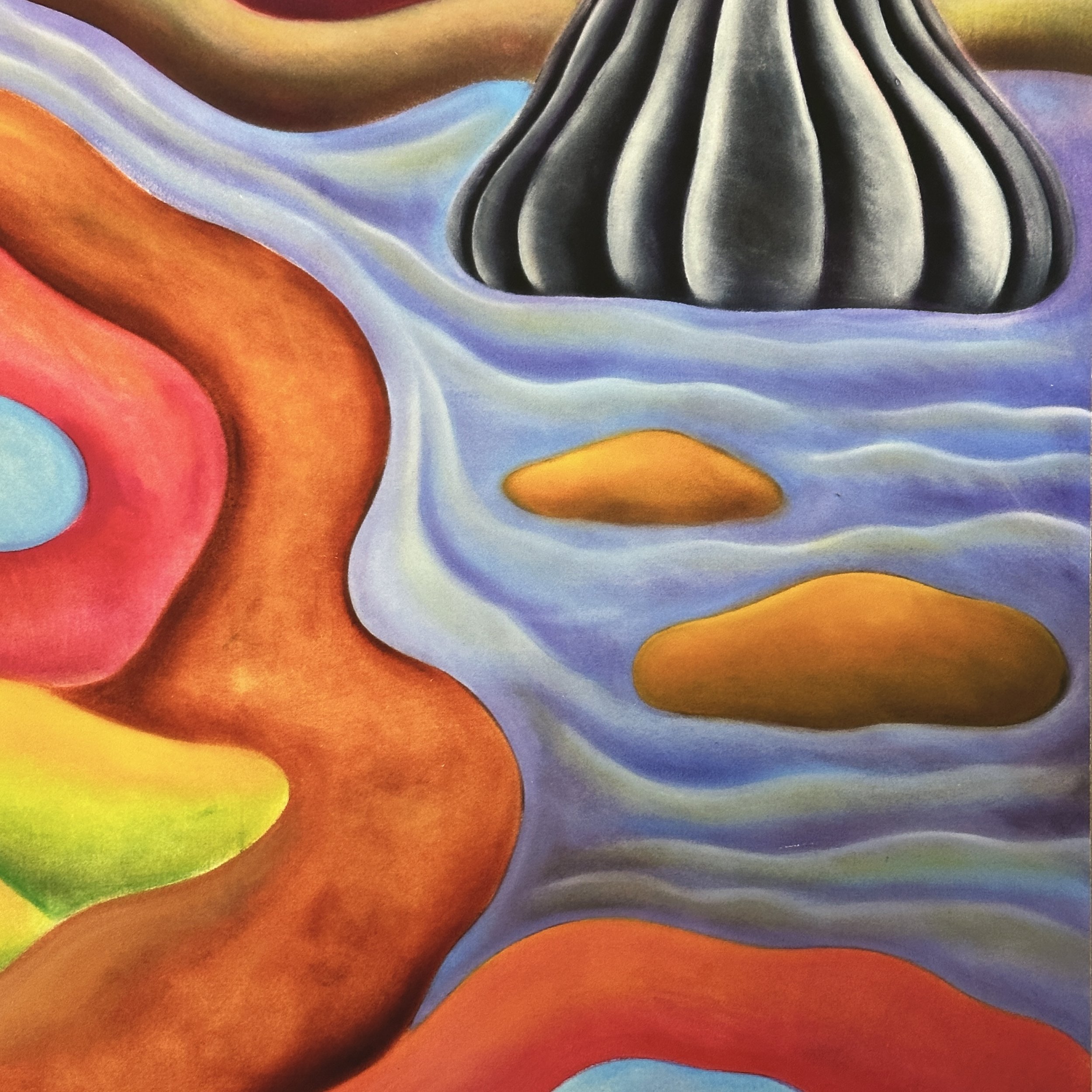 Image 1 of 8
Image 1 of 8

 Image 2 of 8
Image 2 of 8

 Image 3 of 8
Image 3 of 8

 Image 4 of 8
Image 4 of 8

 Image 5 of 8
Image 5 of 8

 Image 6 of 8
Image 6 of 8

 Image 7 of 8
Image 7 of 8

 Image 8 of 8
Image 8 of 8









Adolph Gottlieb (1903-1974) - Germination III, Signed (1969, Lithograph)
Adolph Gottlieb (1903-1974) - Germination III, Signed (1969, Lithograph). Original lithograph on Arches paper. Signed and dated in pencil at the bottom. Edition #16/75. Original gallery tag from smaller Gallery attached to the back. Housed under glass and float mounted in a silver metal frame. Print is in very good condition. Scratches and scuffs on frame. Please refer to pictures for details.
Size: 22.25”H x 30”W (lithograph), 24.5”H x 32.25”W (frame)
Adolph Gottlieb was an American abstract expressionist painter, print maker and sculptor. He is considered to be one of the “first generation” of abstract expressionists. From 1920–1921 he studied at the Art Students League of New York, after which, having determined to become an artist he left high school at the age of 17 and worked his passage to Europe on a merchant ship. He traveled in France and Germany for a year. He lived in Paris for 6 months during which time he visited the Louvre Museum every day and audited classes at the Académie de la Grande Chaumière. He spent the next year travelling in Germany, Austria, Czechoslovakia, and other part of Central Europe, visiting museums and art galleries. When he returned, he was one of the most traveled New York Artists.
Gottlieb had his first solo exhibition at the Dudensing Galleries in New York City in 1930. During the 1920s and early 1930s he formed lifelong friendships with other artists such as Barnett Newman, Mark Rothko, David Smith, Milton Avery, and John Graham. In 1935, he and nine others, including Ben-Zion, Joseph Solman, Ilya Bolotowsky, Louis Harris, Jack Kufeld, Mark Rothko, and Louis Schanker, known as “The Ten”, exhibited their works together until 1940.
It was from 1937-1938 when Gottlieb moved to the desert in Tuscon, where he moved from an expressionist-realist style approach to a style that combines elements of surrealism and formalist abstraction. He drew inspiration from the local environment and symbols to remove temporarily from his work.
Throughout his career, Adolph Gottlieb had 56 solo exhibitions and was included in over 200 group exhibitions. His works of art are in the collections of more than 140 major museums around the world. Gottlieb was accomplished as a painter, draughtsman, printmaker and sculptor. He designed and oversaw construction of a 1500 square-foot stained glass façade for the Milton Steinberg Center in New York City in 1954, and he designed a suite of 18 stained glass windows for the Kingsway Jewish Center in Brooklyn. He was the first of his generation to have his art collected by the Museum of Modern Art (1946) and the Guggenheim Museum (1948). Gottlieb suffered a major stroke in 1970 that left him paralyzed except for his right arm and hand. He was voted into the American Academy of Arts and Letters in 1972. He continued to paint and to exhibit his art until his death in March 1974.
Adolph Gottlieb (1903-1974) - Germination III, Signed (1969, Lithograph). Original lithograph on Arches paper. Signed and dated in pencil at the bottom. Edition #16/75. Original gallery tag from smaller Gallery attached to the back. Housed under glass and float mounted in a silver metal frame. Print is in very good condition. Scratches and scuffs on frame. Please refer to pictures for details.
Size: 22.25”H x 30”W (lithograph), 24.5”H x 32.25”W (frame)
Adolph Gottlieb was an American abstract expressionist painter, print maker and sculptor. He is considered to be one of the “first generation” of abstract expressionists. From 1920–1921 he studied at the Art Students League of New York, after which, having determined to become an artist he left high school at the age of 17 and worked his passage to Europe on a merchant ship. He traveled in France and Germany for a year. He lived in Paris for 6 months during which time he visited the Louvre Museum every day and audited classes at the Académie de la Grande Chaumière. He spent the next year travelling in Germany, Austria, Czechoslovakia, and other part of Central Europe, visiting museums and art galleries. When he returned, he was one of the most traveled New York Artists.
Gottlieb had his first solo exhibition at the Dudensing Galleries in New York City in 1930. During the 1920s and early 1930s he formed lifelong friendships with other artists such as Barnett Newman, Mark Rothko, David Smith, Milton Avery, and John Graham. In 1935, he and nine others, including Ben-Zion, Joseph Solman, Ilya Bolotowsky, Louis Harris, Jack Kufeld, Mark Rothko, and Louis Schanker, known as “The Ten”, exhibited their works together until 1940.
It was from 1937-1938 when Gottlieb moved to the desert in Tuscon, where he moved from an expressionist-realist style approach to a style that combines elements of surrealism and formalist abstraction. He drew inspiration from the local environment and symbols to remove temporarily from his work.
Throughout his career, Adolph Gottlieb had 56 solo exhibitions and was included in over 200 group exhibitions. His works of art are in the collections of more than 140 major museums around the world. Gottlieb was accomplished as a painter, draughtsman, printmaker and sculptor. He designed and oversaw construction of a 1500 square-foot stained glass façade for the Milton Steinberg Center in New York City in 1954, and he designed a suite of 18 stained glass windows for the Kingsway Jewish Center in Brooklyn. He was the first of his generation to have his art collected by the Museum of Modern Art (1946) and the Guggenheim Museum (1948). Gottlieb suffered a major stroke in 1970 that left him paralyzed except for his right arm and hand. He was voted into the American Academy of Arts and Letters in 1972. He continued to paint and to exhibit his art until his death in March 1974.
Adolph Gottlieb (1903-1974) - Germination III, Signed (1969, Lithograph). Original lithograph on Arches paper. Signed and dated in pencil at the bottom. Edition #16/75. Original gallery tag from smaller Gallery attached to the back. Housed under glass and float mounted in a silver metal frame. Print is in very good condition. Scratches and scuffs on frame. Please refer to pictures for details.
Size: 22.25”H x 30”W (lithograph), 24.5”H x 32.25”W (frame)
Adolph Gottlieb was an American abstract expressionist painter, print maker and sculptor. He is considered to be one of the “first generation” of abstract expressionists. From 1920–1921 he studied at the Art Students League of New York, after which, having determined to become an artist he left high school at the age of 17 and worked his passage to Europe on a merchant ship. He traveled in France and Germany for a year. He lived in Paris for 6 months during which time he visited the Louvre Museum every day and audited classes at the Académie de la Grande Chaumière. He spent the next year travelling in Germany, Austria, Czechoslovakia, and other part of Central Europe, visiting museums and art galleries. When he returned, he was one of the most traveled New York Artists.
Gottlieb had his first solo exhibition at the Dudensing Galleries in New York City in 1930. During the 1920s and early 1930s he formed lifelong friendships with other artists such as Barnett Newman, Mark Rothko, David Smith, Milton Avery, and John Graham. In 1935, he and nine others, including Ben-Zion, Joseph Solman, Ilya Bolotowsky, Louis Harris, Jack Kufeld, Mark Rothko, and Louis Schanker, known as “The Ten”, exhibited their works together until 1940.
It was from 1937-1938 when Gottlieb moved to the desert in Tuscon, where he moved from an expressionist-realist style approach to a style that combines elements of surrealism and formalist abstraction. He drew inspiration from the local environment and symbols to remove temporarily from his work.
Throughout his career, Adolph Gottlieb had 56 solo exhibitions and was included in over 200 group exhibitions. His works of art are in the collections of more than 140 major museums around the world. Gottlieb was accomplished as a painter, draughtsman, printmaker and sculptor. He designed and oversaw construction of a 1500 square-foot stained glass façade for the Milton Steinberg Center in New York City in 1954, and he designed a suite of 18 stained glass windows for the Kingsway Jewish Center in Brooklyn. He was the first of his generation to have his art collected by the Museum of Modern Art (1946) and the Guggenheim Museum (1948). Gottlieb suffered a major stroke in 1970 that left him paralyzed except for his right arm and hand. He was voted into the American Academy of Arts and Letters in 1972. He continued to paint and to exhibit his art until his death in March 1974.





